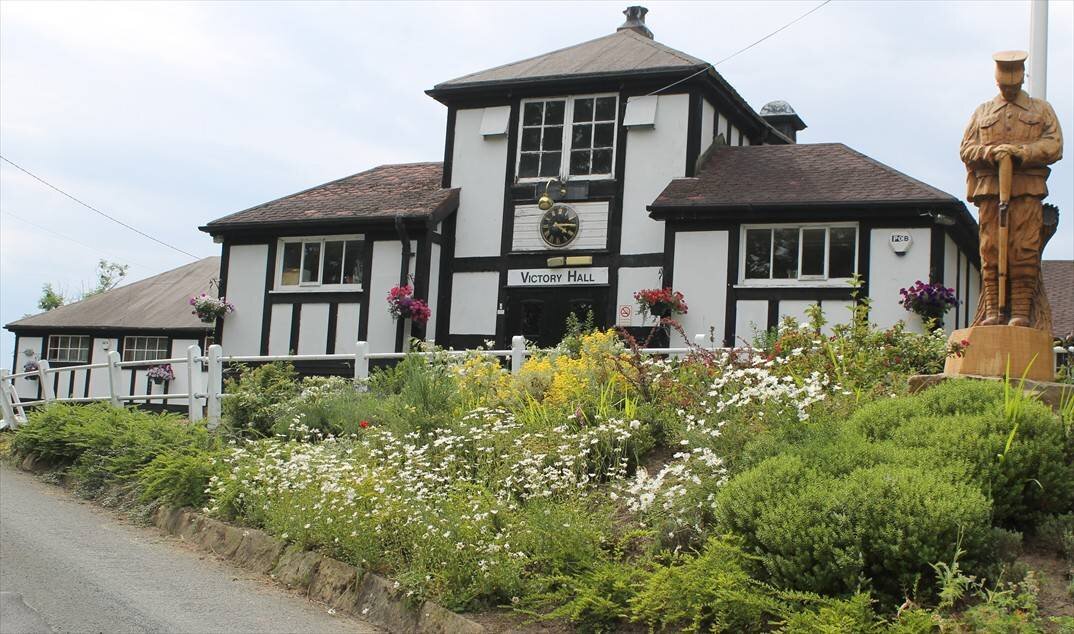
A History of Mobberley Parish Council
The Local Government Act of 1894 led to the establishment of Mobberley Parish Council and Bucklow Rural District Council (BRDC was abolished by a 1972 Act in 1974 becoming part of Macclesfield District Council). The 1894 Act was a rationalisation of a multiplicity of local boards and a transfer of secular duties from the Church.
Elections were carried out in December 1894 and first 12 members were:
Thomas Bradbury Jnr of Brown House. George Bracegirdle of Brookside Cottage. John Clarkson Jnr of Bleakley. Charles Hatton of Moss Lane. John Higginson of Railway Cottages. Thomas Higginson of Baguley Green. William Leech of Gleave House Farm. Herbert Leigh Mallory of Hobcroft House. John Norbury of Barnes Green. Arthur Lavington Payne of the Manor House. Robert H Percival – merchant. Caleb Simcock of Town Lane Hall Farm
Meetings were held in the School Room at the “Church School” until 1903 when they moved to the Hall Bank Mission Room, presumably recently constructed, and then in 1925 to the newly built Victory Hall. The minute books consist mainly of nominations and appointments, references to correspondence and complaints about the state of roads. It’s noticeable that throughout the whole of the First World War there is barely a mention of the impact on Mobberley although elections were postponed throughout the conflict. The first minute book covers the period 1896 to 1929 and it’s noticeable how the impact of the motor car is being felt with several references to dangerous corners and the lack of pavements for pedestrians.
The first recorded business was to look at the charities (Coppock, Stubbs and Hardy’s) totalling £14 12/6d, to petition Bucklow Rural District Council on the state of the road at Paddock Hill and to establish the ownership of the Pinfold in Church Lane. A motion was passed to petition BRDC to repair roads in tarmacadam rather than cobbles.
Meetings weren’t held with the current monthly frequency. Topics minuted included the state of the roads and the desire for Bucklow Rural District Council to move to tarmac for repairs, refuse disposal (‘scavenging’), sanitary affairs (cesspools) and property boundary maintenance, ponds and whether to sign up to one of the town fire services. In those days there was no mains water supply, there were no sewers and no ‘scavenging’ service (refuse collection – waste being deposited in selected locations (pits), no National Health Service.
The 1900s minute nothing of significance. Within a few years of the next decade the Great War must have dominated village life and yet there is little evidence of it in the minutes. There is talk of building houses for returning ex-servicemen with the Parish Council rejecting BRDC plans for rental as too expensive for agricultural wages. The water supply (or lack of) in Wood Lane becomes a long running saga. The railways (which had not been nationalised of course) delivered day trippers on Sundays whose unruly behaviour causes concern. What we now know as Station road was owned by the Cheshire Lines Committee and its successors right up until the 1980s, its state causing regular concern. A councillor, even then, suggests that a station near Broad Oak Lane bridge would be better than the existing location.
The 1920s were dominated by the search for sites for housing, the arrival of the telephone and potential supply of electricity. The Parish Council met at Pinfold Corner prior to the unveiling of the war memorial.
The 1930s saw a boundary revision that brought all of Moss Lane and most of Paddock Hill (as far as Whim Brook) into the village (from Great Warford). The need for mains water supply and a sewage system continued to dominate. Concern is expressed that Knolls Green should not extend its commercial centre further towards Faulkner’s Lane. A long running correspondence about a Town Lane Playing Field starts. The road widening scheme to bypass the Mill Lane bottleneck comes into existence and talk of air raid precautions emerges well before the outbreak of WW2, prompted perhaps by the Spanish Civil War?
In the run up to the Second World War and the 1940s, little is minuted about the impact of the war itself, although reference is made to bomb craters as having a potential refuse disposal use. The military requisitioned the Victory Hall and meetings switched to Hanson House, home of Col. Riddick. Later in the decade the ‘Manchester Land Grab’ is of great concern. Dangerous roads, the motor car and footpaths feature prominently
Post war new housing, sewage treatment, electricity, telephones, bus services and educational legislation feature most prominently. The attempt by Manchester Corporation to compulsorily purchase land in Mobberley in 1946 ran for nearly ten years. The Infant School closed in 1952 as part of the plan for secondary schooling and the creation of Knutsford Secondary School.